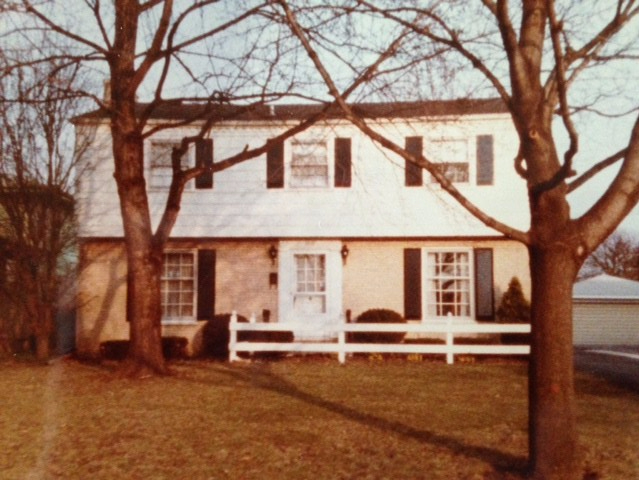
Are Americans’ lives getting worse? Or does it just seem that way?
One of our core responsibilities as high school teachers is to help our students develop critical thinking skills, learn to question assumptions and challenge “common sense”.
It’s something we humans are bad at — as a rule — for all sorts of complex psychological reasons. We’re much too easily influenced by what other people say, and we tend to seek information that supports our biases.
Still, we can and must do better. As teachers, we need to incorporate critical thinking into all of our lessons.
What got me thinking about this challenge this week was a quote in this New York Times story. The mayor of Oshkosh, Wisconsin, stated what many believe to be true of our economy today: “People are working similar jobs to what their parents did but are not able to maintain the same lifestyle.”
This is taken as a given in our political discourse, that our standard of living has fallen from our parents’ generation. It’s practically part of our national mythology. It wasn’t questioned in the article.
But has our standard of living really fallen?
Every year, I explain to my econ students what life was really like for my family in the 1970s (and for typical American families in the 1950s), but it would be interesting to take that lesson one step further.
This year, I’m going to have them calculate: What would it cost to replicate my parents’ (or better yet, their grandparents’) standard of living today?
Do today’s households really need to work two jobs to do it?
Let’s start with a few basic facts — facts we seem to have collectively forgotten.
When my dad was my age (50), it was 1979. Here are a few things you might remember about that time, if you grew up in a similarly middle class, college-educated family in the 1970s. Let’s take off the rose-colored glasses.
- We had no computer or internet
- We had no videogame system
- We had no stereo system, just a simple record player
- We had no cell phones
- We had one house phone, with no fancy features (like call waiting)
- We had one TV, but no cable (and no fancy surround sound)
- We had no central air conditioning
- We had no microwave
- We had one car, a late model Chevy Impala with broken AC
- Our house, which seemed large at the time, was 1900 square feet
- My brother and I played rec league sports — we had no “traveling teams”
- We ate basic ’70s meals, meaning no fancy produce — never heard of kiwi or cilantro — and usually ground beef or chicken, not steak or fish. (I didn’t know you could buy spinach fresh! And organics?? Forget it!)
- We rarely ate out, even at McDonald’s, and it was a BIG DEAL when we did
- We only used long distance to call our grandparents
- We went to the mall once a year to buy a handful of new clothes; the rest of my clothes were hand-me-downs (and no designer stuff)
- Our vacations were once a year, always by car, and usually to a rented cabin on a lake
- We thought we were living large when we got a color TV and a dishwasher
So what would it cost to live at my parents’ standard of living now?
I ran the calculations, based on buying their house at its current market value (about $500,000) with 20% down, buying a new Chevy Impala, and budgeting $800 a month for groceries (for a family of four). And yes, I included property taxes, heating bills and basic health insurance.
My best estimate: It would require a pre-tax income of around $60,000 a year. Yes, despite the huge increase in housing costs: $60,000 a year.
That’s just $1000 more than household median income in this country, meaning the typical American household could probably afford my parents’ 1970s lifestyle.
And they could afford it on much less in Oshkosh, Wisconsin, where you can buy a 1900 square foot house for about $70,000 (Zillow).
So why are we so convinced that our standard of living has fallen?
I think it’s because we are simply incapable of making these kinds of comparisons on a casual basis. We can’t fathom what it would be like to live without the conveniences (and extravagances) we have today.
No cable TV? No cell phone? Are you asking us to go back to the Dark Ages?
If we’re going to have honest dialog about our economic problems and potential solutions, we need to acknowledge that the typical American standard of living has improved dramatically, at least in terms of “stuff,” compared to our parents’ generation. It’s our expectations that have changed.
We’ll be doing our students a service if we help them learn to ask these kinds of questions and seek the supporting facts for themselves, rather than just accepting what people assume to be true. Hopefully, they’ll find it interesting too.
*This article originally stated that $60,000 was individual median income. It is household median income.

Great article! We also need to teach our children (even the grown-up ones) that just because something is advertised/marketed and it looks wonderful, you don’t just get to have it. We’re all of us spoiled these days, but without disposable income (after ALL expenses have been paid by you) you cannot make disposable purchases. “But this boy/girl at school has one and I really want it!” These children are growing up with no sense of saving for a desired purchase, and many ‘adults’ are living this dream.
LikeLike
“That’s just $1000 more than the individual median income in this country, ”
I’m pretty sure you mean household median income here—individual median income is significantly lower.
LikeLike
You are correct – and I will make the correction.
LikeLike